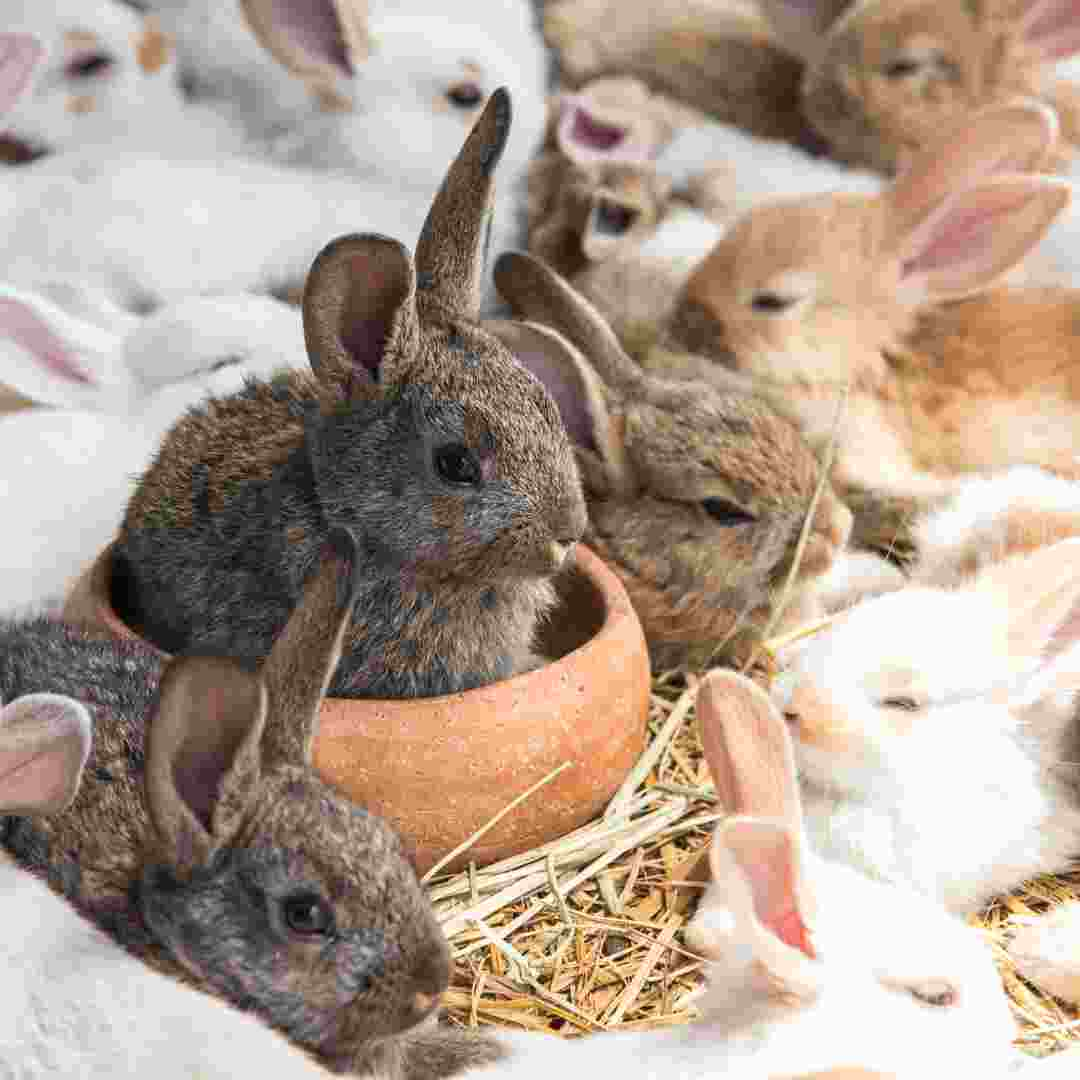Contents Table
Introduction
Surprising Number of Rabbits Worldwide
How rabbits became a global phenomenon
Environmental Impact of Rabbits
Pros and Cons of Rabbit Breeding
Rabbits in the Food Chain
Q&A
Conclusion
Introduction
As one of the world's most popular animals, rabbits are abundant. Rabbits are estimated to number around 200 million worldwide, most of them wild. Rabbits live on every continent except Antarctica and come in all sizes, colours, and breeds. They thrive in many habitats due to their adaptability. Rabbits live in practically every environment, from North African deserts to European woods.
https://youtu.be/7dOdutzF2Fc?si=sxCm04V9q82zkQ0F
Surprising Number of Rabbits Worldwide
Rabbits are abundant worldwide. An estimated 200 million to 600 million rabbits live in the wild worldwide. This figure is even more impressive considering that rabbits are not native to all regions.
Rabbits are from Europe, Africa, and Asia. They arrived in Australia in the 18th century and North America in the 19th. Rabbits are distributed worldwide, from the Arctic tundra to the Middle East deserts.
Rabbits thrive in many ecosystems due to their adaptability. Females can have up to 12 litters every year. This has helped them quickly establish big numbers in new regions.
The world's rabbit population shows its adaptability and persistence. Rabbits live and thrive in many countries despite being persecuted for their fur and flesh. This is a wonderful accomplishment worth celebrating.
How rabbits became a global phenomenon
Rabbits have spread worldwide. Rabbits are part of many civilizations, from pets to scientific studies.
Domesticated rabbits were first kept as pets in the 16th century. Their intelligence, gentleness, and ease of care make them popular pets. Many rabbit breeds compete in shows worldwide.
Rabbits have long been utilised in scientific study. Their short lifespan and rapid reproduction make them popular in medical research. Due of their ease of training and versatility, rabbits are utilised in behavioural investigations.
Rabbits are very popular in cooking. Many countries consider rabbit meat a delicacy and serve it in restaurants and at home. Rabbit fur is prized for its softness and warmth in apparel and accessories.
Due of their adaptability and attractiveness, rabbits are a global phenomenon. They are pets, research tools, and food. They manufacture apparel and accessories and are popular in shows. Many cultures depend on rabbits, and their presence is felt worldwide.
Environmental Impact of Rabbits
Numerous countries are home to rabbits. Though beautiful and cuddly, they can harm the environment. This page discusses rabbits' environmental impacts.
Rabbits breed swiftly and can easily become out of control. This can cause overgrazing, harming the environment. Burrowing rabbits also erode soil. This can destroy habitats and biodiversity.
Rabbits can potentially spread illness. They can spread parasites and diseases to humans and animals. This can spread tularemia and myxomatosis.
Rabbits can also bother farmers and gardeners. Reduced yields and financial losses result from their crop eating and plant damage. They can also dig up and consume bulbs and other plants, causing more losses.
Furthermore, rabbits can cause noise pollution. Humans and animals can be disturbed by their loud calls.
Rabbits can significantly harm the ecosystem. Overgrazing, soil erosion, disease spread, agricultural loss, and noise pollution might result. These implications must be considered and rabbit numbers managed to safeguard the environment.
Pros and Cons of Rabbit Breeding
Rabbit breeding is popular among pet owners and farmers. Despite its limitations, it can be rewarding. Before breeding rabbits, weigh the pros and cons.
Pros
Profitable rabbit breeding is a major benefit. Rabbit meat, fur, and pets are popular. Breeding rabbits can be profitable provided you generate high-quality products.
Rabbit breeding may be fun and rewarding. Growing rabbits may be fun and rewarding. You can also learn about animal husbandry and genetics by rearing rabbits.
Cons
One drawback of rabbit breeding is its time and labour requirements. Rabbits need constant care and monitoring to stay healthy. Cages, feed, and other equipment make rabbit breeding expensive.
Rabbit breeding can also be emotionally draining. A litter of rabbits dying or getting sick can be painful and hard to cope with. Rabbits are temperamental and hard to control, which can stress new breeders.
Rabbit breeding can be profitable and satisfying, but it also has its obstacles. Before breeding rabbits, weigh the pros and cons.
Rabbits in the Food Chain
Rabbits feed many predators. Keystone species have a disproportionate impact on their environment compared to their abundance. They maintain ecosystem equilibrium by eating vegetation and spreading seeds as herbivores.
Foxes, coyotes, hawks, and owls eat rabbits. Humans hunt them for meat and fur. Rabbits assist maintain the food chain by providing food for these predators.
Seeds are also spread by rabbits. As they eat plants, they disperse their seeds, helping the species survive. This is crucial in disturbed ecosystems to restore balance.
Rabbits also regulate vegetation growth. They protect plants from overgrowing by eating them. This keeps the ecosystem balanced and ensures other species have enough resources.
Rabbits feed predators and preserve environmental equilibrium. They are a keystone species and vital to the environment.

Q&A
1. How many rabbits exist?
Rabbits are widespread in many habitats and breed swiftly, making it hard to determine their population. Wild rabbits number 200 million, according to estimates.
2. Where are most rabbits?
Most rabbits live in Europe, North America, and Australia.
3. How do rabbits like their environment?
Rabbits like lush grasslands, meadows, and forests. They require water and shelter.
4. Are rabbits endangered?
Bunnies aren't endangered. However, habitat loss, hunting, and other human activity can harm their populations.
5. What is rabbit lifespan?
Rabbits live 5-10 years in the wild and 12 years in captivity.
Conclusion
Due to their diverse habitats and climates, it is impossible to correctly estimate the global rabbit population. However, millions of rabbits are wild and millions more are pets.